It's another busy committee meeting before City Hall takes its summer vacation in August. This month, infrastructure gets the lion's share of the attention with housing, stormwater and design all coming up for discussion along with the big question of what Guelph should do for its bicentennial 10 years hence.
PRESENTATIONS: Recognition of the City of Guelph Adult School Crossing Guard Program by the Employment Coordination Committee of Guelph and Wellington presented to Christine Vettor; 2017 Awards of Excellence in Water Efficiency (Public Education and Awareness Category) presented to Jennifer Gilks, Cathy Chaput, Megan Haessler and Jocelyn Kelly for the H2Awesome Youth Education Program; 2017 Awards of Excellence in Water Efficiency (Public Sector Utilities Category) presented to Wayne Galliher, Jennifer Gilks, Julie Anne Lamberts, Karen McKeown, Laura Mousseau, Emily Stahl, Alicia Wind and Heather Yates for the 2016 Water Efficiency Strategy Update; Recognition of Alex Chapman, Manager, Climate Change Office, for receiving the Renewable Energy Professional accreditation from the Association of Energy Engineers; and, Intergovernmental Relations Status Update Barb Swartzentruber, Executive Director, Policy, Intergovernmental Relations and Open Government Cathy Kennedy, Manager, Policy and Intergovernmental Relations.
COW-CS-2017.13 Tax Sale Vesting – Roll 23 08 010 003 18701 - Tax sales, also known as property tax lien sales, tax foreclosure properties or municipal tax sale properties, is when the tax debt of a property is sold with the person buying the debt, which is to say they're giving the property owner a loan to pay off that debt. Surprisingly, it seems that no one wanted to pay off the just over $8 million tax bill for 129 Surrey St. E, so, as consequence, staff is recommending that the City of Guelph vest the property, and will reap the cost of any future sale or development of the land to recoup the cost. The City has an allowance for uncollected taxes, so there will be no effect on the budgetary bottom line.
COW-IDE-2017.29 Registration of Two-unit Houses - How can you have two-unit house? Well, if your house as an in-law suite, a basement apartment, or an accessory apartment, then you've got two units. The problem here seems to be that the policy that came out of this provincial legislation created to inspect and improve two-unit houses ended up putting them into two different streams: the ones built prior to 1994 were upgraded using the Fire Code, and the ones build after 1994 were expected to meet the Building Code. Over the years, the policy has been further amended, and the time has come to require some clarity to reflect current practices and present interpretations of the bylaw. Changes include automatically registering all previous registered units, requiring up-to-date contact information for owners, and providing flexibility for future amendments.
COW-IDE-2017.31 Affordable Housing Financial Incentives Program Framework - Last fall, council directed staff to bring forward options for an Affordable Housing Financial Incentives Program (AHFIP) and this is what they're bringing back. The framework includes eligibility criteria and funding priorities, and will guide the process of implementing those incentives. So staff are recommending a minimum of six units per year - half of the primary rental units required according to the affordable housing target - be incentivized at a limit of $70,000 per unity. To qualify, the framework is prioritizing the construction of bachelor and one-bedroom units with grants to offset capital costs and City fees, or in the form of a loan to defer the cost of those City fees. Staff is recommending that the incentives be in place for the 2018 budget.
COW-IDE-2017.30 Stormwater Service Fee – Credit Program Feasibility Report - Part of the transition to a fee-based stormwater service was for staff to develop potential program for incentives to compel property owners to make their own stormwater improvements. There were four options before staff: offering no incentives, enhancing current rebates, creating new rebates, and doing some kind of combination of new and old incentives. Obviously, staff is recommending the fourth one, the hybrid option. Previous programs that may be included in the new plan are rain gardens, permeable pavement, green roofs, and stormwater management ponds. According to the staff report, their recommendations encourage better on-site stormwater management practices, rewards good behaviour, defer some operating and capital costs from the City, and provide ongoing environmental awareness.
COW-IDE-2017.32 LED Street Lighting - Here's an interesting number: 13,119. That's the number of street lights on public right-of-ways owned by the City of Guelph. Here's another number: 16. That's the percentage of the City's utility budget spent on keeping those street lights on. In terms of a dollar figures, that's $1.7 million, and on top of that, the costs have risen by 10 per cent per year since 2010. Converting the City's street lamps to LED will save over $14 million in 15 years, which considering that the cost of conversation will only amount to $8 million is a steal. Maybe not a twice the price, but considering that the lights will pay for themselves before the decade is out, not bad. And if monetary savings aren't enough, the electricity savings will reduce CO2 amazons by 464 tonnes per year, or the equivalent of taking almost 100 cars off the road. If committee approves, the $8 million will be borrowed from the Wastewater Capital Reserve Fund to make it happen.
COW-IDE-2017.33 Guelph Active Transportation Network Design Guidelines and Feasibility Study - The purpose of this report is to explore ways to build a network of primarily off-road routes with will further promote active transportation in the city year round, including trail networks that complement the 2013 Cycling Master Plan, which has on-road segments. The GATNS also take into a account the Transportation Master Plan, the Guelph Trails Master Plan, and the Official Plan all to thread the needle on tying them together in creating an overall active transportation network. The hope is to create reliable transportation options 12 months a year in order to reduce traffic congestion, and improve community health.
COW-IDE-2017.34 Draft Urban Design Manual: Urban Design Vision and Design Action Plan - Building on 2009's Urban Design Action plan, and through the consultation of numerous City departments, the new manual will assist in implementing new design directions through the City's Official Plan, provide future direction on reviewing the comprehensive zoning bylaw, supporting an efficient development review process, and informing future City projects. The manual is split into two volumes. In the first volume, urban design is defined, and it's described why it's important in the Guelph context. The urban design principles as defined by the official plan are also outlined. In the second volume, staff highlights opportunity areas (places in the city with potential for significant change), how to strength institutions and activate public space (areas where the City could seek improvement), and the possible new directions for urban design policy (AKA: the future).
COW-IDE-2017.35 Clair-Maltby Secondary Plan Phase One Report and Recommended Vision and Guiding Principles - The area covered by this plan is nearly everywhere south of Clair Rd. and north of the border with Puslinch (AKA: Maltby Rd.), in other words we're planning for the future for the biggest, untouched stretches of land left in the City. It should be said that this is not the plan, but the things that will be kept in mind as staff develops the plan. So much consultation has already been done, and so much more consultation remains, but they will be done so by keeping in mind five guiding principles: vibrant and urban, green and resilient, healthy and sustainable, interconnect and interwoven, and balanced and liveable. The plan itself will look at a good mix of land use (residential, employment and commercial), setting appropriate height for buildings, keeping environmental and cultural features, integrating public facilities (like parks, schools, trails, and the like), infrastructure, and active transportation networks. So far, the project is on schedule and on budget.
Planning a Bicentennial Project in Guelph 2027 - Guelph turned 190 this year, so we only have 10 years left to plan our bicentennial celebrations! Councillor Bob Bell will speak to this motion, which will investigate the possibility a stand-alone infrastructure project to reflect Guelph's past and future, gathering lots of feedback from the community, and planning to pay for it well in advance of 2027 through the capital budget process.
Woonerf Pilot Project for New Street - "Woonerf" is a Dutch term that means "living street." Councillor Bell, again, will speak to this motion which asks staff to evaluate the possibility of incorporating woonerfs into future street plans. So what does that mean? There are numerous examples, but according to a paper presented to the National Association of City Transportation Officials, it's a way of seeing "the street as a social space, rather than just a channel for vehicular mobility." Woonerfs have been used in cities all over the U.S. and there's presently one in Toronto in the West Don Lands running east from St. Lawrence St. past River St.










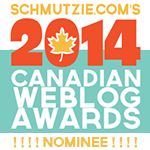



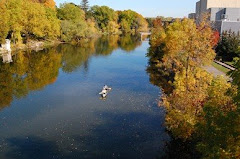
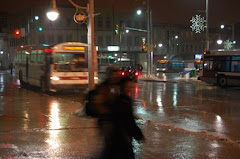
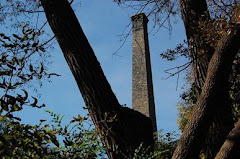
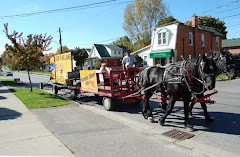
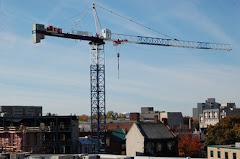
No comments:
Post a Comment